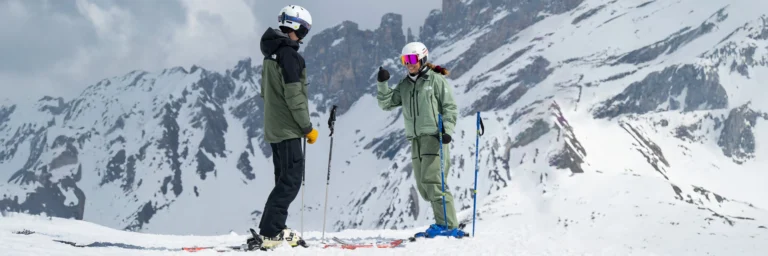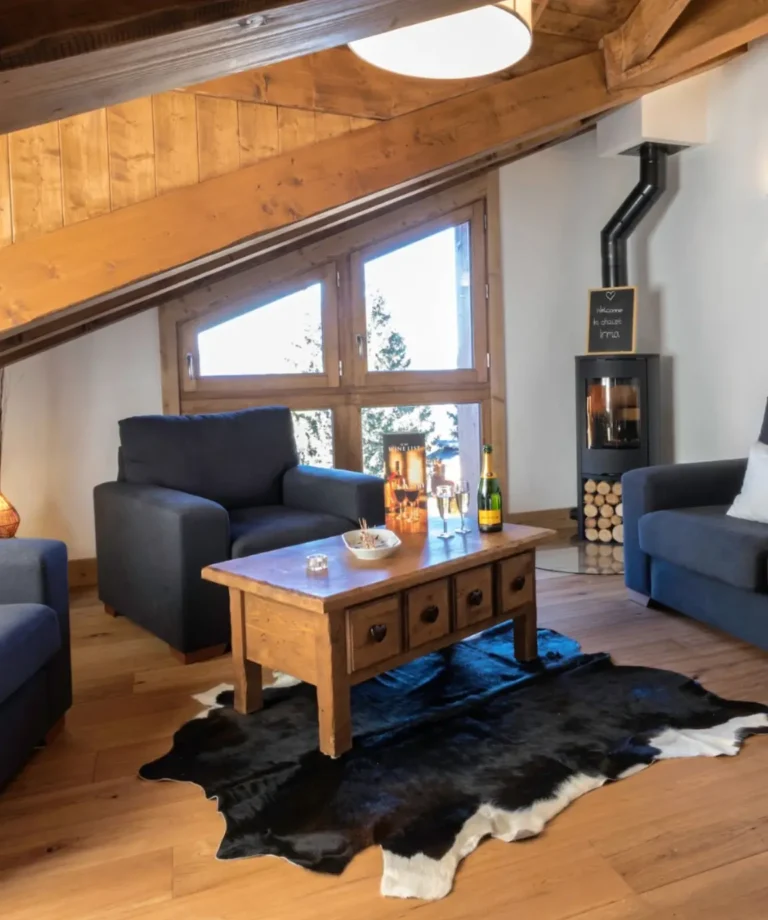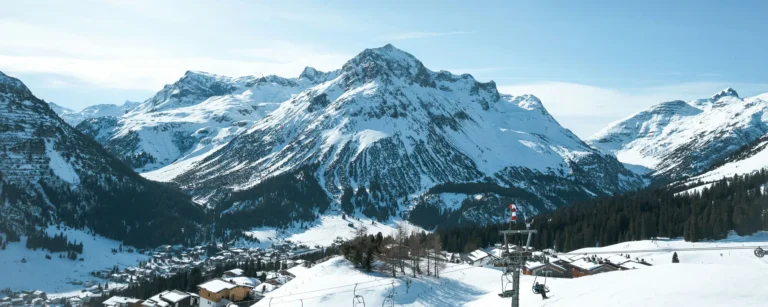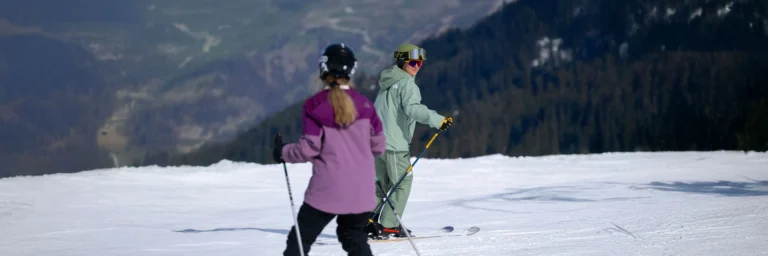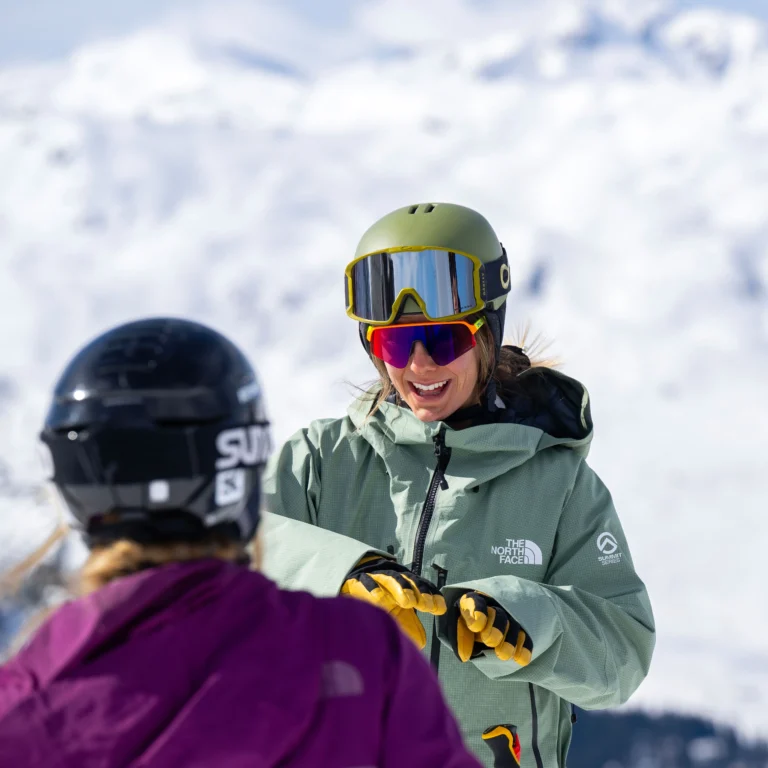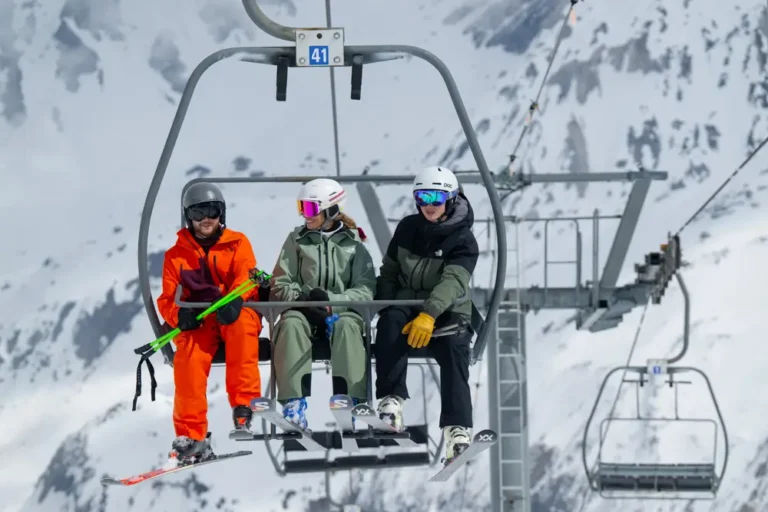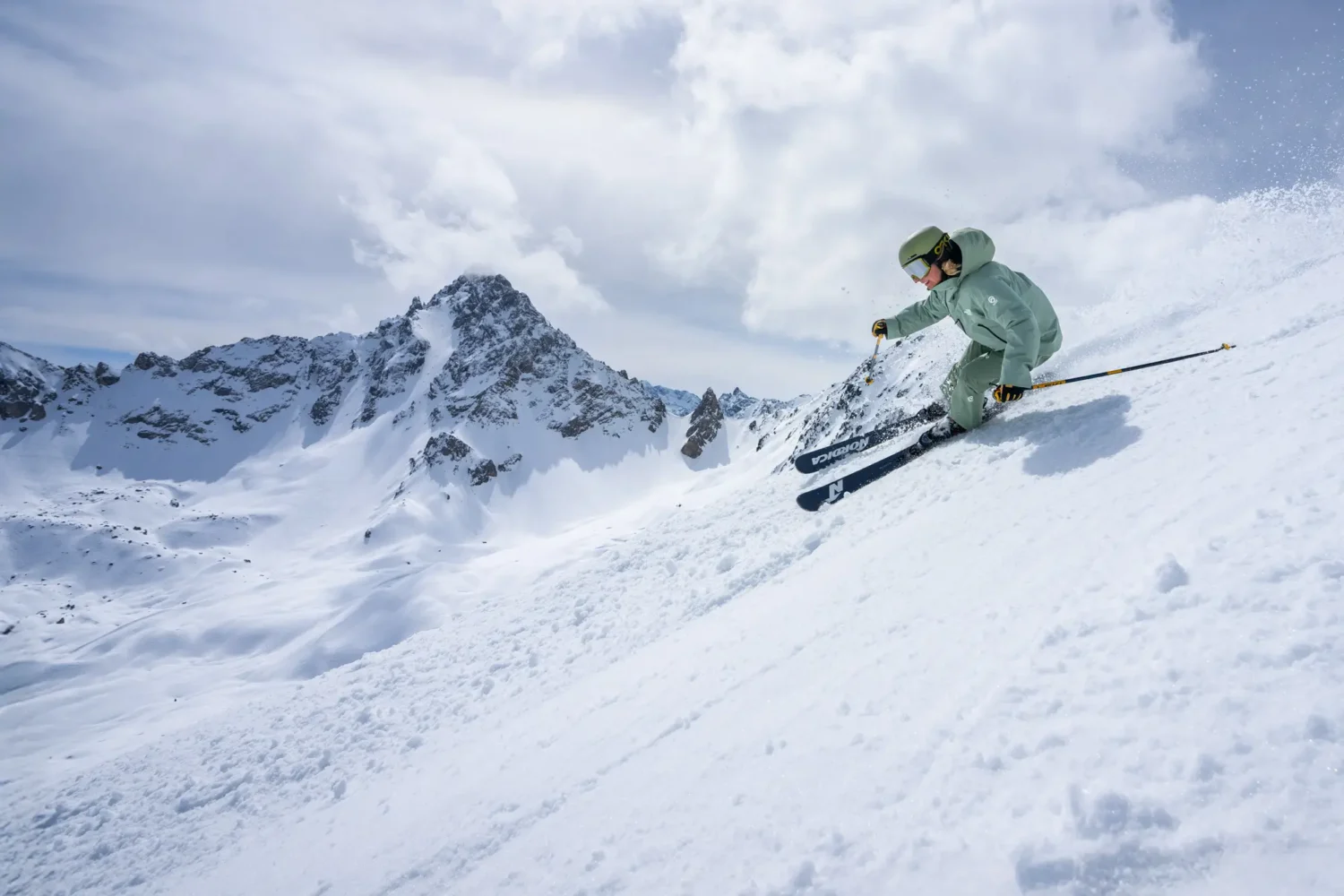Teaching kids to ski is both an exciting and rewarding experience.
Whether you’re a trainee ski instructor or a parent, here is what you should focus on when teaching kids to ski.
Safety First: The Foundation of Every Lesson
Safety is the first and most important part of teaching kids to ski. Accidents can be prevented through preparation and risk management.
Equipment Check
Before stepping onto the snow, every child’s equipment should be checked. Make sure it’s all age-appropriate and fits well. Helmets are essential, gloves too.
In warmer weather, you may be teaching kids to ski who don’t want to wear gloves. Even though they may get hot hands, try to encourage children to keep them on. Hands can be cut easily on ski edges, or get very cold quickly once wet.
Warm-Up and Stretch
A fun, short warm-up at the start of the lesson can prevent injuries and mentally prepare them for the session.
Clear Boundaries
Children must understand where they’re allowed to ski and where they aren’t. you’re responsible for choosing these areas. Avoid selecting pistes that are close to their skill ceiling. It’s a great idea to leave a solid margin of skill to account for fatigue and adverse conditions.
It is your responsibility to choose suitable pistes and judge the conditions. Don’t take the child anywhere dangerous or where you’re unprepared for such as off-piste.
The Buddy System
When teaching kids to ski in groups, implement the buddy system. The buddy system will make the children responsible for each other. This makes the children easier to manage for instructors and parents.
When leading, you should still regularly look behind and count how many are in your group to prevent losing a child.
Structuring a Kid-Friendly Ski Lesson
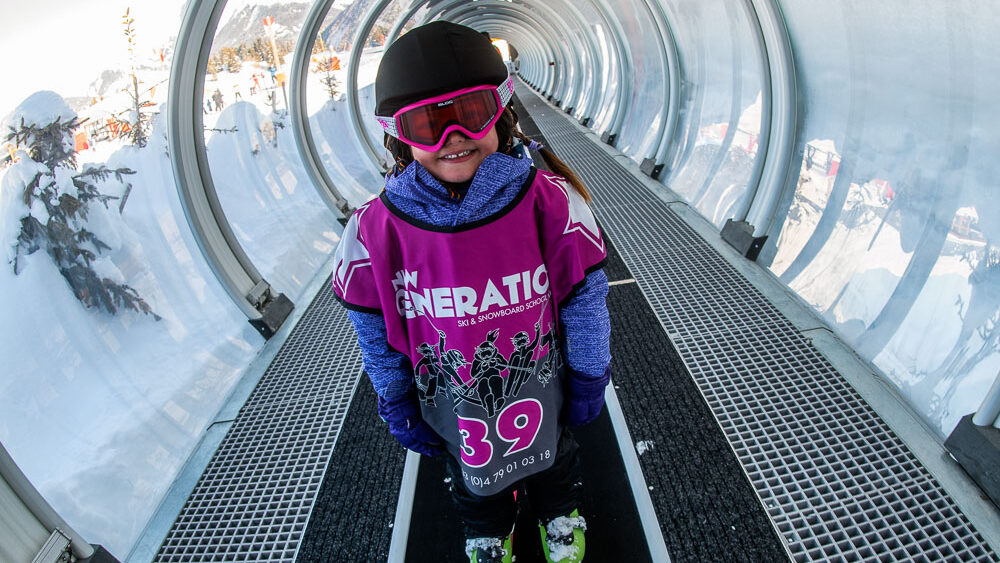
When you’re teaching kids to ski, try to plan a well-thought-out a structured session. This structure affects how much a child is engaged and learns from the lesson.
Here’s an example of how to structure a lesson.
Introduction and Ice Breakers (5 mins)
Children will ski better and enjoy themselves more if they feel at ease with you. Start the session by learning their names and building rapport.
It’s also important to set a tone for the lesson at the start. Younger kids will like a greater emphasis on fun. Older kids will appreciate being treated more like adults.
Equipment Familiarisation (5 mins)
Introduce the children to the equipment and give a demonstration on how to put the skis on.
It’s a good idea to let children put on their own skis (with help when needed). Make it part of the learning process and encourage students to be independent.
On-Snow Warm-Up (10 mins)
The first part of the session should be simple and easy to follow. Use games at this point to encourage the child’s enthusiasm for learning.
Using games like “Follow the leader” or “Simon says” can help children follow instructions without needing them to be overly technical or difficult to follow.
Skill Focus (60 mins depending on skill)
Choose only one or two skills to focus on. Choosing too many focus points per session will give a conflicted aim and not enough time to practise them in any depth. When you’ve chosen your skills, offer clear demonstrations. Try to keep these fairly brief and non-technical, as you’ll soon lose engagement.
Ensure that you give the child sufficient time to practise and provide any feedback alongside. Keep each instruction short and age-appropriate. You can use drills, although these shouldn’t be too technical.
Practising Skills (20 mins)
Kids learn best when they’re having fun. Once you’ve focused on a skill, use a game to reinforce what they have learnt. You can also aim to give them the chance to explore while developing the skill. This gets miles under their skis and is a great way for them to see the resort.
Cool Down and Recap (20 mins)
Put the skills into practice and get some laps in. Finish and with a gentle ski down. Talk about what they did well and what’s next. Some kids may receive a medal or badge at the end of a week of ski school.
Learning Through Enjoyment
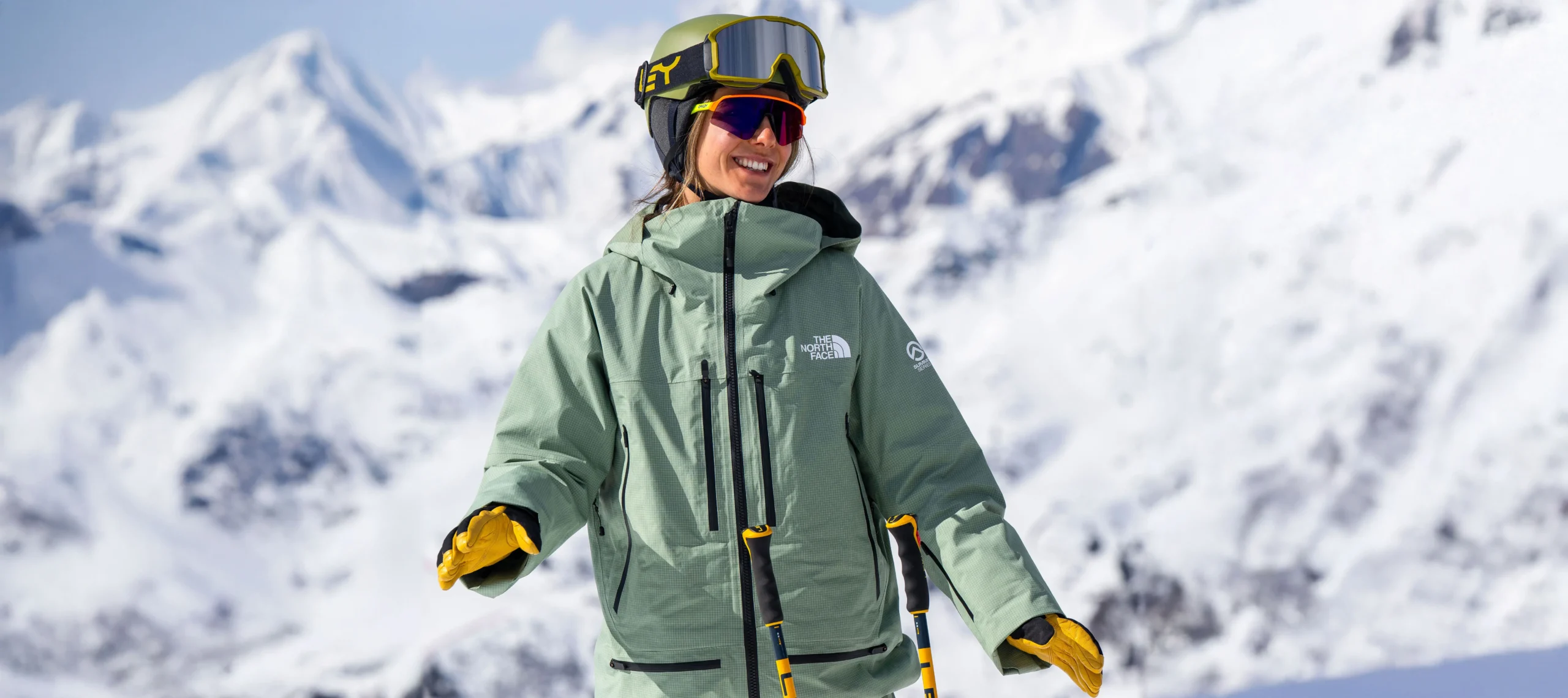
Games are an essential part of teaching kids to ski. They make lessons interesting and help children develop skills.
Here are a few instructor favourites:
Follow the Leader
Following the leader is great for children, as it helps them learn to turn shapes without any technical explanation. This will help them learn through doing.
You should choose a terrain which isn’t too difficult for them. You should act as the leader, at least to start. When leading, it’s essential not to ski too quickly.
Simon Says
This is great for younger kids to encourage certain movements. Whilst following you slowly down an easy piste, you can say “Simon says skis together (Parallel)”, they have to make the action that you mentioned with their skis. Keep them engaged by saying “lift your uphill ski” to catch them off guard.
If they’re making good progress, then allow them to lead.
Safeguarding and Child Wellbeing

Safeguarding involves more than just staying safe on the slopes when teaching kids to ski.
Be aware of signs of distress, fatigue, or discomfort. The child should feel that you’re approachable and trustworthy.
Communication with Parents
Instructors should keep a child’s parents informed at every opportunity. This should include a child’s progress, behaviour, and enjoyment. Share any concerns with them as well.
Instructor Conduct
Always maintain professional boundaries when teaching kids to ski who aren’t your own. Use positive, age-appropriate language. Avoid unnecessary physical contact.
Instructors will also be required to undergo safeguarding training and undergo background checks. Parents may ask about this, so instructors should feel comfortable discussing it.
Encouragement Over Expectation
Children of different ages have differing energy levels and attention spans. Some kids take to skiing like naturals, while others may take longer to get comfortable.
The key is patience and encouragement. Praise effort over results. Celebrate small wins. If a child has a tough day, focus on the positives and let them know that tomorrow will be different.
Teaching kids to ski can be both rewarding and challenging. It demands not only technical skill but also empathy, creativity, and emotional intelligence.
If you need a hand teaching kids to ski, our team is available to help.

